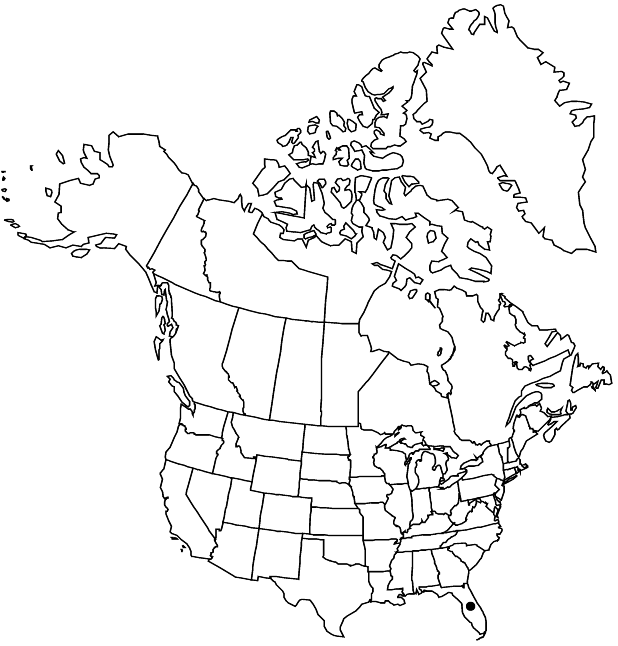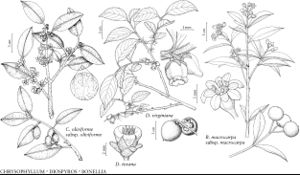Bonellia macrocarpa subsp. macrocarpa
Shrubs or trees to 4 m; twigs puberulous-lepidote when young, glabrescent. Stems gray, smooth. Leaves usually alternate, sometimes inconspicuously pseudoverticillate; petiole to 6 mm, sparsely puberulent adaxially; blade usually elliptic, sometimes lanceolate or oblanceolate, 3–6 × 1–2 cm. Racemes to 3 cm. Pedicels ca. 1 mm; bracts lanceolate, 3–7 mm. Flowers: sepals 3–4 mm, margins entire or slightly erose; corolla lobes ovate to suborbiculate, 6–9 mm; stamens shorter than staminodes; staminodes suborbiculate, apex slightly 3-lobed. Berries 3–4 cm diam.; pericarp wrinkled. Seeds ca. 1 cm.
Phenology: Flowering year-round.
Habitat: Disturbed sites
Elevation: 0-10 m
Distribution

Fla., Mexico, West Indies (Cuba), Central America.
Discussion
Subspecies macrocarpa is cultivated in Cuba and Florida, where it has escaped. A component of thorn scrub in its native habit, it has escaped into spoil deposits and fringes of mangrove forests in Miami-Dade County.
Selected References
None.
